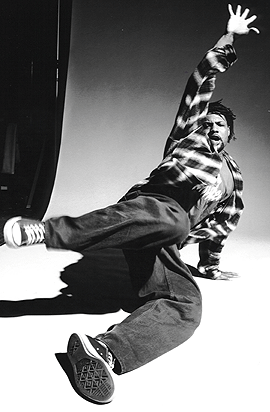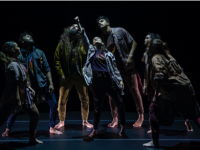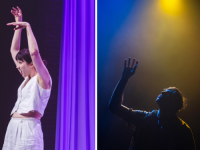 By Debbie Hatumale
By Debbie Hatumale
“People wanna know their history. You know, you can’t know where you are going if you don’t know where you come from.”
– Budda H. Stretch
Elite Force Crew
Mop Top Foundations
Hip Hop dance legend and pioneer
Hip Hop is more then a dance style. Hip Hop is a culture, and dance is a distinct part of that culture. Hip Hop dance was established in late 1984 and comprised of four elements – Dance, DJ, MC and Graffiti. Of all the Hip Hop arts, the history of Hip Hop dance is still the least recognized.
Unbeknownst to most dancers, street styles such as Popping, Locking and Break Dance (Also known as Bboying or Bgirling) were established long before Hip Hop dance. Each has its own separate history and documentation, but Hip Hop dance today has grouped the separate styles together, forcing Hip Hop dance to function as an umbrella term as well as a distinct style in itself.
Hip Hop started small, as an urban social dance style present within communities of dancers. Once the recognition of Hip Hop dance lead to the media popularizing the new dance style, major media coverage led to the over exposure of Break Dance and Funk Styles such as Popping and Locking. Large media coverage customarily serves as a promotion for any subject, however in the release of 1980’s films “Breakin”, “Breakin 2/Electric Boogaloo” and “Beatstreet”, the promotion of Hip Hop dance portrayed a historically inaccurate depiction and endorsed the wrong ideas about Hip Hop’s dance foundation. More so for commercial intentions rather then portraying precise representation of the dance, the films broadcasted choreography that appealed to audiences without worrying about being correct. Through the culmination of these mass media films as well as numerous music videos and television commercials, the integrity of the culture, as well as the dance, had slowly started to weaken.
Hip Hop dance originally emerged as a “party dance”, gaining popularity in clubs and dance floors by listening to Hip Hop music and grooving to the music. The original form of Hip Hop dance emerged from improvised movement to Hip Hop music that was fun and upbeat, forming as a social dance rather then a planned and choreographed piece. Different to what it has come to be in its current dance form – choreography and planned steps were not the focus of Hip Hop dancers in the beginning.
Hip Hop dance today nearly ignores Freestyle and concentrates on the “choreography” of the dance – learning set steps and trying to accomplish them as best as you can. While there is nothing wrong with this – ignoring the basis and original form of the dance is almost as bad as failing to ignore technique and history in Ballet. The influence of other conventional dance styles has had its affect upon Hip Hop dance, which has instigated the shift from Freestyle to sharp and clean movements that have been choreographically planned.
The ability to express individual dance by improvisation shows a dancer’s ability to merge training and individual style. Hip Hop in its original form saw dancers not caring about what they looked like, just grooving to Hip Hop music that became popular on dance floors. Recent Hip Hop trends have witnessed an emphasis on choreography that is danced with a Hip Hop attitude, without any understanding on basic Hip Hop foundation and groove.
Break Dancers at the inception of Hip Hop dance referred to the social dance of Hip Hop as “party dancing”, emphasizing the fun and carefree nature of the dance. However, implying that there was no choreography or planned steps at the time of Hip Hop creation is also wrong – to gain the popularity of the style requires pieces of recognizable choreography. The creation of new trends and steps in Hip Hop dance requires improvisation and Freestyle, emphasizing raw, unbound and unplanned movement that can only come from improvisation.
The essence of Hip Hop dance is Freestyle. Budda Stretch, from Elite Force Crew and Mop Top Foundations, a Hip Hop dance legend and pioneer, describes Hip Hop as not only a type of dance. Hip Hop is a culture, and the dance is an expression of the culture. Ignoring the very roots of the dance equates to ignoring the essence of the culture. In essence, Hip Hop as its own individual dance form hasn’t evolved much. It is the influence of other conventional styles, the media, and the shift away from what was originally deemed important that has changed how Hip Hop is danced. The shift from Freestyling and social dancing to set Choreography has seen current Hip Hop ignore what was seen as the most important foundation at its inception. The unfortunate lack of historical documentation of Hip Hop dance roots has produced dancers who participate in Hip Hop dance but ignore what should be the most important element, Freestyling.
Link:
Budda Stretch from Elite Force Crew defines real Hip Hop Dance.
http://www.youtube.com/watch?v=4if1XfMr78w













